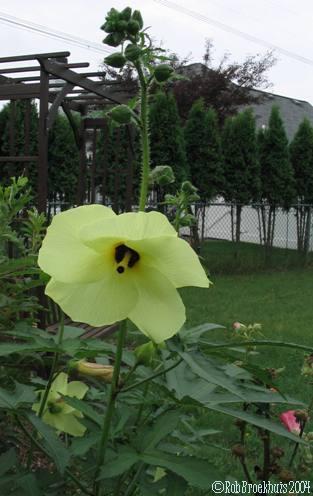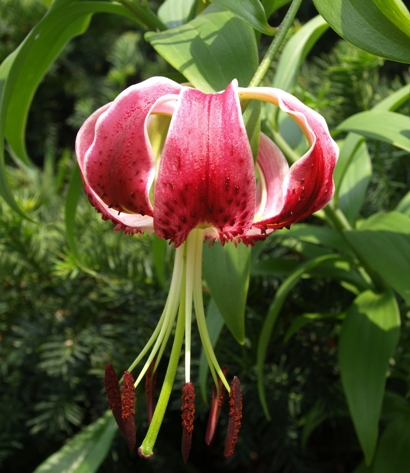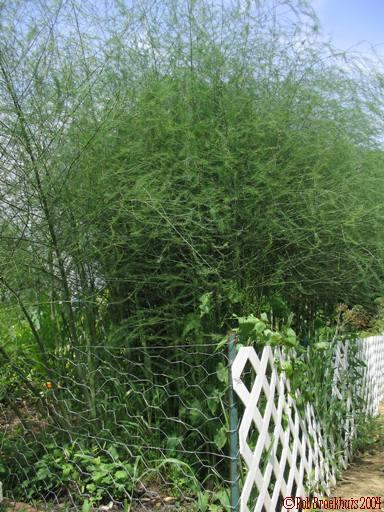| Synonym(s) | Acer nikoense var. griseum |
| Common name | paperbark maple |
| Family | sapindaceae |
| Life cycle | tree (Z4-8) |
| Size | 20-30' |
| Light | sun-part shade |
| Cultural notes | moist, well-drained soil |
Slow-growing deciduous tree noted for its exfoliating bark and orange/red fall color. Ours is still small (about 18") after four years of growth. When casually inspected, the young tree looks deceptively like poison ivy, with its irregular leaf shape and red coloration to new leaves. However, the acer leaves are arranged opposite, vs. the alternate arrangement of poison ivy.
Finally, after several years in our nursery area, the tree made its way into the garden proper, replacing the silver maple that I removed from the side of our big pond's bog filter last year. A small tree is OK there, the silver maple was getting huge!



